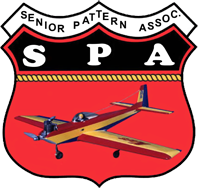|
My Monokote Covering Tools and Techniques
Ken Blackwell
Tools and Materials
-
Two Covering Irons - one bare and one with a
sock
Any brand except Coverite because they do not get hot enough at the
tip. -
Trim iron
-
Heat Gun for open
bay covering
-
Extension cord with multiple
outlets, switchable
-
24” x 36” Cutting Mat Hobbico Builder's Cutting Mats
-
Two X-acto knives with #11 blades. One to make cuts with
metal ruler on mat and one to trim Monokote on the airplane.
-
Crock Stick or Arkansas Stone to keep X-Acto blades sharp.
-
Metal meter-yard stick
-
6” metal ruler
-
Sharpie Ultra Fine marker
-
Roll tracing paper or similar
-
Poster Paper Wal-Mart etc.
-
Monokote in the colors that you like, plus clear for
sealing the hinges.
-
Sanding Block ¾" x 2-¾" x 12" with 100 grit on one side
150 grit on the other
-
Sanding Block ¾" x 2-¾" x 12" with 240 grit on one side
and 320 grit on the other
-
Paint Stirring Stick Sanding block 100 grit or whatever
you need at the time
-
Micro Fiber tack cloth or similar
-
Vacuum Cleaner
-
Hobbico Hobbylite balsa filler
-
Stripe Cutting Tool
-
3M™ Stikit™ Gold Sheet Roll, P100A grade, 2 3/4 in x 30
yd, #02598
-
3M™ Stikit™ Gold Sheet Roll, P150A grade, 2 3/4 in x 45
yd, #02596
-
3M™ Stikit™ Gold Sheet Roll, P240A grade, 2 3/4 in x 45
yd, #02593
-
3M™ Stikit™ Gold Sheet Roll, P320A grade, 2 3/4 in x 45
yd, #02591
Preparation
-
Small dents in balsa may be steamed out by applying water
then ironing the dent until the wood swells back to flush.
Iron until dry. Cracks, cuts should be filled with Hobbylite filler, then
sanded when dry. Use 100 grit sandpaper for major shaping,
then continue with finer grits down to 320 grit
for finishing.
-
Vacuum then wipe clean with microfiber tack cloth. Keep
the microfiber tack handy during covering. You want to keep any dust
particles off at all times.
Applying Monokote
-
Have the bare iron, covered iron, and trim iron hot and
ready on the workbench.
-
Picking which ever part that you need to cover start with
the light colors (white, yellow, etc.) then apply darker
color. Design the layout so that the darker color overlaps
the lighter color by ⅛". Alternately, you can design the
layout so that the two colors butt up against each other,
then apply a decorative pin stripe over the joint.
-
In case of a wing, I start with the bottom then
do the top so that the overlap at the leading edge and
trailing edges lap down over the lower side of the wing.
Sometimes, I find it necessary to apply a narrow strip
of clear over the LE where the two colors come together.
-
Using a bare iron, iron the surfaces just before covering
-
Now to the actual covering. When applying each piece, you
want to tack all the edges while keeping the piece as smooth
as possible. Once all edges are sealed, use a bare iron to
lightly float over the whole piece, taking care not apply
pressure and make the covering stick. You just want to get
the wrinkles out over the whole piece. Then, use the sock
iron to apply light pressure, starting at one end moving to
the other to iron the covering down so that it sticks. Don't
overdo it. Just heat it until it's smooth. After it cools or
after being outside in the sun, etc. you may have to
re-shrink it.
-
Re-Shrinking: Don't smash the covering in one
spot. To effectively re-shrink, you need to float the
iron over the area to be shrunk, heating it until
smooth, then gradually apply sticking pressure.
-
Covering compound curves like wing tips is
tedious but technique can overcome the problem. First,
cover the tips before the rest of the wing and separate
from the rest of the wing. Design your layout
accordingly. Cut a piece that is big enough to provide a
good hand grip while pulling the covering around the
end. Cover the bottom half of the tip first, then the
top half. Apply the covering initially to the beginning
of the tip in a straight line. You will be applying the
covering from this line toward the end tip of the wing.
Using a bare iron heat the covering ahead of making
contact with the wood. You want to shrink the covering
before it contacts the wood. You can never smash a
wrinkle out of the covering. You need to start at the
radius of the tip at the leading edge, working a bit at
a time until you get to the trailing edge. Then move
back to the LE and work toward the TE a bit at a
time….until you reach the center of the tip and about ⅛"
past. Use a very sharp X-Acto knife with #11 blade to
cut the covering….trimming the excess that you were
using to pull with. After finishing the bottom, cover
the bottom in a similar fashion. Trim with a sharp knife
trying to not cut through the under layer. If you do cut
through, you may apply a thin strip of clear over the
joint to keep the covering from peeling after use.
Applying Patterns: Example Wings
-
Mark the pattern on the balsa with Sharpie Ultra Fine
Marker.
-
Lay a piece of tracing paper over the wings, trace the
pattern on the paper with the marker.
-
Use this paper to make patterns for cutting Monokote.
-
Use the tracing paper patterns to cut the various Monokote
colors on the cutting mat with X-Acto knife
-
When making the patterns remember that you want about ⅛”
overlap of dark colors onto light colors.
-
So if you had a pattern of blue over white the white
pattern would be ⅛” bigger than the original traced pattern...so that the blue will overlap the white by ⅛”.
-
Apply the light colors first, like white or yellow, then
apply the dark colors like blue.
-
The way to detect where the blue should overlap the white
is to use the ultra fine Sharpie to mark the edge on the
white. Remember you first drew the parting line between the
colors directly on the balsa. This line will be vaguely
visible through the light color. So, place little dots along
that line on the white to use in aligning the blue that
overlaps.
-
Sometimes I butt the two colors together with no overlap
then apply a strip of ⅛” to ¼” wide. to cover the seam
between the two and provide a decorative appearance.
Care and Feeding of X-Acto blades
You have two general uses of the knife when covering.
First cutting the pieces according to your pattern design,
then trimming the pieces after you have stuck them to the
wing, fuse, etc. The initial cutting of the pieces on the
cutting mat doesn't require a pristine sharp knife and it
will be slightly dulled by sliding along the ruler and into
the mat. But, the blade that is used to trim the covering
after application must be extremely sharp. To keep a sharp
blade you must frequently change blades as I used to do,
using 20 or more blades during the covering of an airplane.
Lately, I have been using a Crock (ceramic) stick to keep
the blade tip sharp. I have also used a wet-ted Arkansas
stone to sharpen blade tips. I think the crock stick may be
easier. I keep two knives on the table. One for cutting
pieces on the mat and the other for trimming the covering on
the airplane.
Sealing Hinge Line of Control Surfaces
Control surfaces are more effective if they are sealed so
than air can't flow between the gap. The following describes
the method.
-
Cut strips of clear Monokote 5/16" wide. I cut them 26"
the same width as the roll. then cut them to length for a
particular control surface.
-
Strip the backing off the strip that you are going to
apply.
-
Fold the strip lengthwise with the finished side together.
-
Insert the strip into the gap on the lower side of the
control surface. Use a 6" ruler to hold the strip into
place.
-
Use a trim iron with the flat tip to iron the strip into
place, sliding the ruler as your go.
Sanding Techniques & Use of Sandpaper
I use only 3M Stickit Gold Sheet Roll Sandpaper due to
it's superior quality. For a good finish, sandpaper must be fresh. Don't keep on
using it after it is dull. It must be sharp to leave a good
finish. I use a piece of pine 2-¾" wide x 12" long as my sanding
block. Using the sticky back sandpaper, I place one grade on
one side and another on the other side. I also keep a paint stirring stick from Lowes
or Home Depot with
Stickit on the end wrapped around it. Many times this type
sanding tool is superior to a big sanding block. Sometimes I cut a piece of Stickit about 6" long then fold
it over to make a flexible sanding pad 2.75" x 3".Then, it is convenient at times to wrap some Stickit
around a dowel to sand into round, radius places. I use 100 grit paper in initial preparation, but get down
to 320 grit for the final finishing. In the building of an
airplane, I use more 100 grit than anything else.
Above all,.have fun and.take your time. A covering job is
completed a piece at a time. Concentrate on that
piece.you are working on. Pretty soon the job will be complete and you can stand
back and admire your work.
Good Luck,
Ken
|

